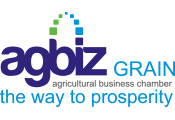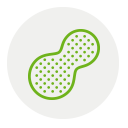
Maximum Residue Levels
Maximum residue levels
Maximum residue levels
The most important aspects are the use of chemicals and the restrictions on chemicals that are present on the grain that will be delivered. Legal prescriptions determine the use of herbicides, insecticides and several other agricultural chemicals as well as the residue levels of such products that may be present in the commodity. Producers should familiarize themselves with these legal requirements and meet the standards laid down therein.
Agricultural Chemicals
The producer must be aware of the agricultural chemicals and restrictions on the various types of grains and oilseeds as stipulated in the Fertilizers, Farm Feeds, Agricultural Remedies and Stock Remedies Act (Act 36 of 1947). This law defines standards for the use of certain herbicides, insecticides and several other agricultural chemicals. The list of registered products is updated regularly - new agricultural chemicals are registered for various applications, and obsolete products removed, and its use is outlawed. It is therefore very important to keep abreast of the list of registered agents.
The Foodstuffs, Cosmetics and Disinfectants Act (Act No. 54 of 1972) determines the maximum residue levels of agricultural chemicals that may occur on food products in South Africa and is applied by the Department of Health. A producer must therefore be aware of the guidelines prescribed by Act 36 and he/she is responsible for the chemical products use on the grain and oilseeds.
Resources for producers
1 Records
- Name of farm / Stand Number
- Cultivar
- Name / Number of the land
- Hectares
- Date of agrochemical application
- Active ingredient
- Lot number
- Provider
- Provider's ACDASA no.
- Concentration applied liters / ha
- Administered by
- Reason for agrochemical application
2 Labels
It is important to note the directions on the label regarding the registration of agricultural chemicals for various types of grains and oilseeds for the control of a particular weed, fungus or pest. Except for the lot number, it is also advisable to preserve the date of manufacture of the containers. Pay special attention to poison that remains from a previous crops. The influence of type of nozzles, time of application, spray delivery, use restrictions, compatibility with other products and general safety precautions must be taken into account.
Agrochemicals must also have an L-number, which means the product has been registered for use in South Africa. The producer must also insist on a "Material Safety Data Sheet" (MSDS) from the supplier. The MSDS provides extensive information about the product, even the kind of first aid or emergency relief procedures that can be applied. The MSDS is provided free of charge with the purchase of agricultural chemicals.
3 Recommendations by agents
Always insist that all recommendations regarding agrochemical applications are made in writing. Make sure the agent or representative who makes the recommendations complies with the necessary requirements, such as prescribed by ACDASA (Agricultural Chemical Distribution Association of South Africa).
If applications are handled by an agrochemical advisor, make sure this person's name and P-number appear on the recommendation. The P-number is issued by the Department of Agriculture, Forestry and Fisheries after the advisor has undergone the necessary training. The operator's P-registration must also be in the relevant field of application, for example weed control, fumigation and aerial are all separate registration fields.







